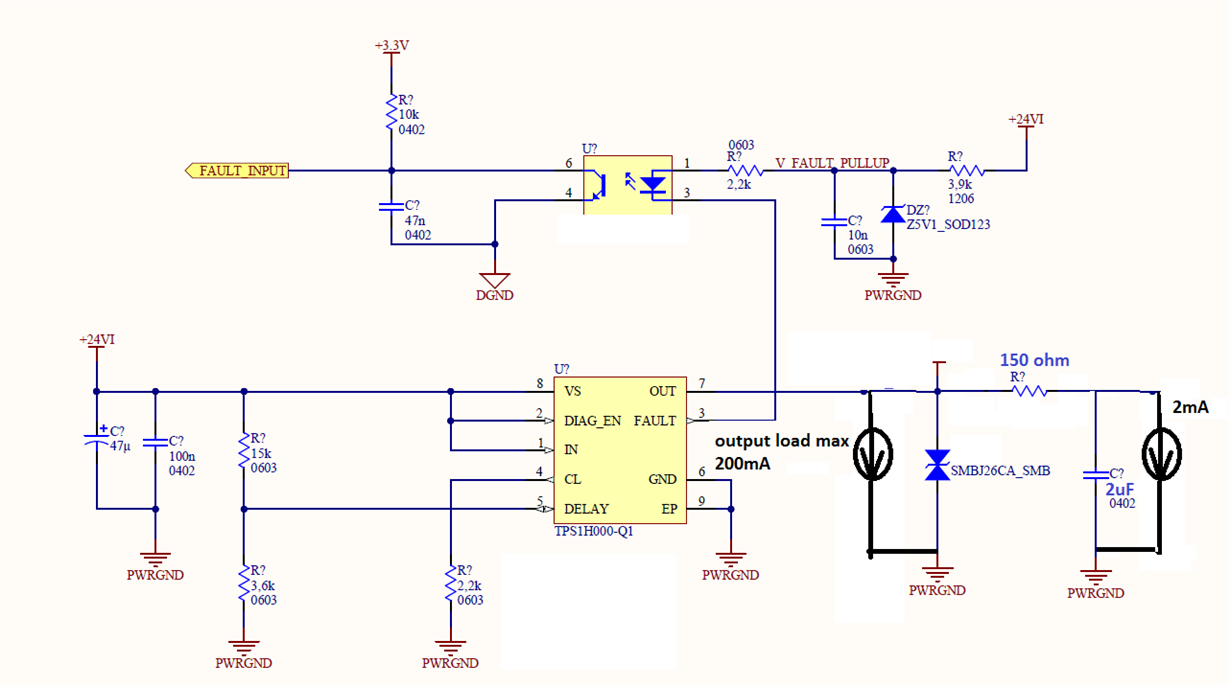Good morning, I am using TPS1H000 to limit my output current to 200mA at 24V. I am not able to understand the expected accuracy when I set CL resistor to Rcl=2200ohm. By my calculation Iout limit is=218mA but how about accuracy: is it +/-20% max? Or it depends on output current rise time? Which are the maximum and minimum current limit in all the worst case? I would like to use component in auto retry mode because I don't have the possibility to drive In input.Then I have to optoisolate the fault signal ..
Another question is : Considering that I have on output a maximum load of 200mA and another load of 2mA but over an RC with 2uF and 150ohm--> How about the behaviour during the start-up? I think that I will overcome the maximum current due to 200mA and charging capacitor by 2mA, so Fault Pin will be low until capacitor is charged..Correct? How to avoid this behaviour? Is it possible to set a delay also in auto retry mode with a capacitor on delay pin?
 Thank you in advance, best reg
Thank you in advance, best reg
Attached my schematic.



